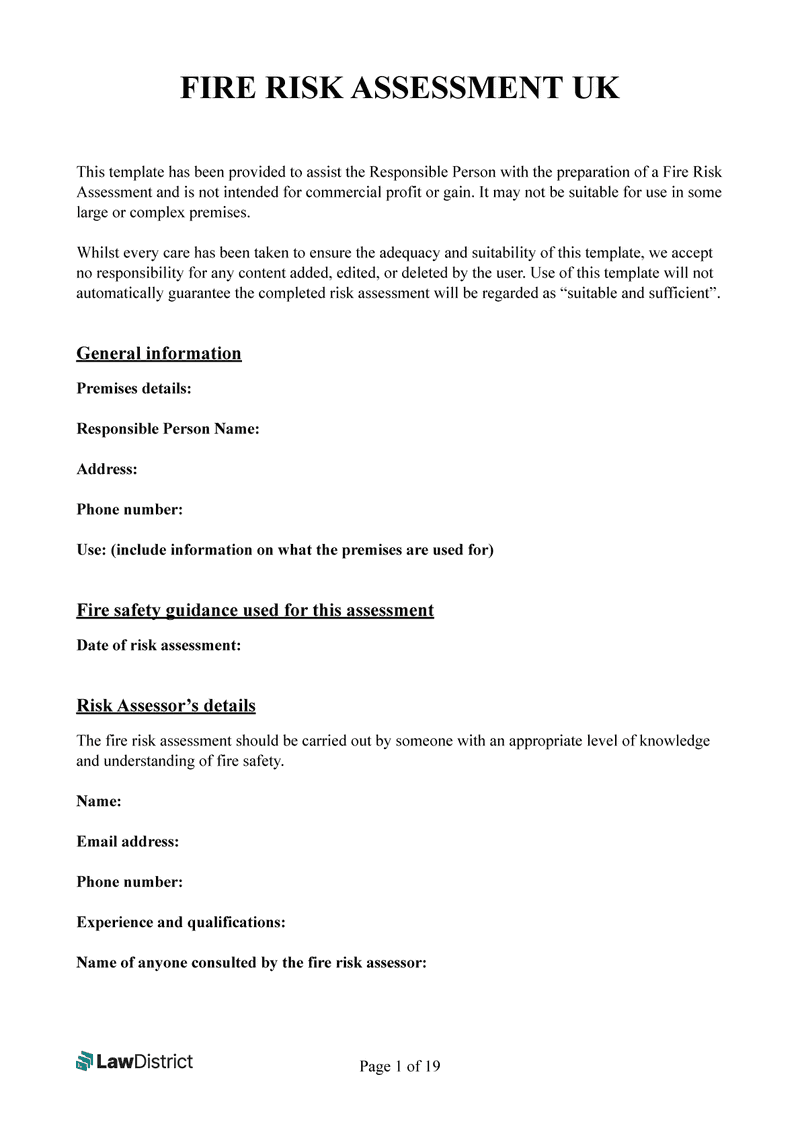A Fire Safety Risk Assessment Template is a structured document that helps organisations systematically identify, assess, and manage fire risks in their premises.
It provides a clear framework for evaluating potential hazards, such as sources of ignition and combustible materials, and implementing control measures to mitigate these risks.
The template also ensures that key aspects, including emergency planning and occupant safety, are thoroughly addressed.
By using a basic Fire Risk Assessment Template, businesses can streamline the process while complying with fire safety regulations and improving overall safety.
Who needs a Fire Risk Assessment Template?
Any individual or organisation responsible for non-domestic premises, including landlords, employers, and building managers, should use a Fire Risk Assessment Template.
This applies to various settings such as offices, shops, factories, and residential care facilities.
The template is particularly useful for those needing to comply with the Regulatory Reform (Fire Safety) Order 2005.
It helps ensure that all potential fire hazards are identified and managed effectively, safeguarding both occupants and property while meeting legal obligations.
